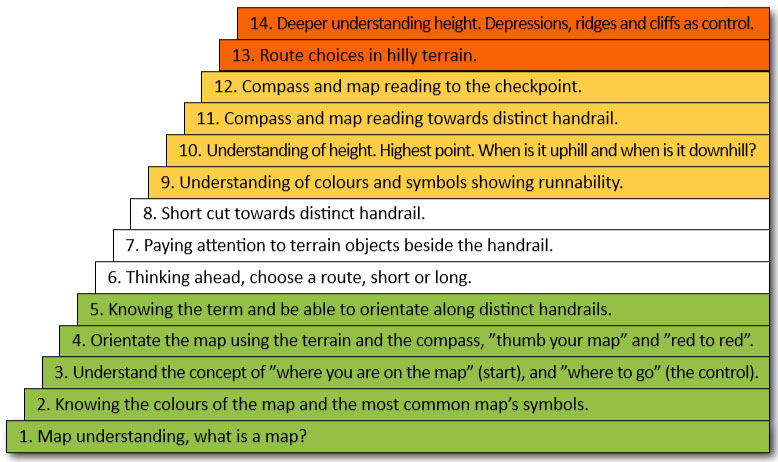In general, a child’s ability to read a simple map and connect it to the terrain is not sufficiently developed until at least age 8 (although there can be significant child-to-child variability). OAK currently offers differentiated programming, based on a child’s age and skill level.
Both kids with no previous orienteering experience, and kids who have previously been in the OAK program, are welcome. The OAK coaches will assess each child’s experience and skill level during their first session, and assign them to an appropriate training group. Parents/caregivers should be aware that siblings registered together in the Spring program will not necessarily be in the same training group.
Typical Programs:
The OAK program is typically divided into two separate groups:
8 – 12 year olds (Vancouver Program)
Based in public parks in Vancouver (from Trout Lake to Jericho and in between), this program is targeted at young athletes learning their fundamental sporting and orienteering skills. Athletes may be keen to start competing or just interested in exploring outdoors. They will be primarily learning in known areas with supervision while they learn how to read and understand the map and the terrain they are in. Expect lots of small group activities and games with a ~1:5 coach to athlete ratio. The program’s final session will include a timed fun event in a local park.
12-18 year olds (North Van program)
OAK is hoping to encourage athletes to test their skills in competition and we are offering a more advanced program for athletes looking to learn to compete in orienteering. This program will be head-coached by one of Canada’s national team members! There are no prerequisites (except for a willingness to explore the outdoors) so all experience levels are welcome. Athletes can expect to start venturing into unknown terrain as they build their map and compass skills in small groups and as individuals. We hope that by the end of the program that athletes will be able to compete on their own in weekend events.
Sport and stages of childhood development
Our OAK programming is aligned with the Canadian Sport For Life (CS4L) Long Term Athlete Development (LTAD) stages. The LTAD focuses first on developing a person, then on developing an athlete, and finally a competitor. It is of utmost importance that youth experience a variety of sports and games when they are young, while learning how to move and use their body (physical literacy).
There are 4 overall skill-sets that are addressed in LTAD-based programming:
- Sport technical/tactical/strategic skills
- Mental skills (spatial literacy)
- Physical capacity (physical literacy)
- Life skills
Orienteering is considered a late development sport; i.e. one in which success at the elite level comes from building highly integrated technical, physical and mental skills on top of that early physical literacy base.
Through the program, athletes will learn skills as they move up through the the levels on the chart below:

Our primary goal in OAK, however, is that young athletes enjoy their time orienteering, gain some useful skills, and remain active for life, no matter where their lives take them!
Coaches
All OAK coaches are enthusiastic and experienced orienteers. We will endeavor to have both female and male coaches, however most likely groups will be mixed (depending on age and ability).
Glossary:
- Map understanding: Knowing that the map is reduction small scale and simplification version of reality.
- Handrail: Distinct terrain objects that are easy to follow, for example, roads, paths, fences or large buildings. Less distinct handrails can be small paths, hedges, ditches and, vegetation boundaries.
- Orientate the map: Alignment of the map consistent to the real north with the map image aligned with reality. This is achieved by the Red to Red principle.
- Thumb your map: Positioning of the thumb on the map precisely where one is in reality. As one moves in reality, so too should the thumb consistent with that movement.
